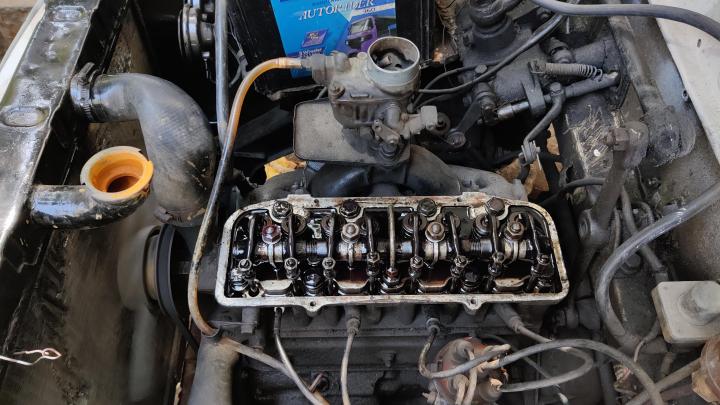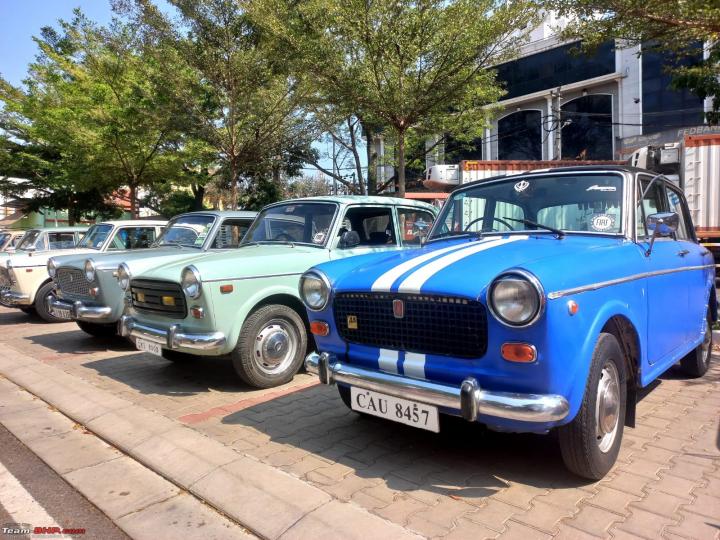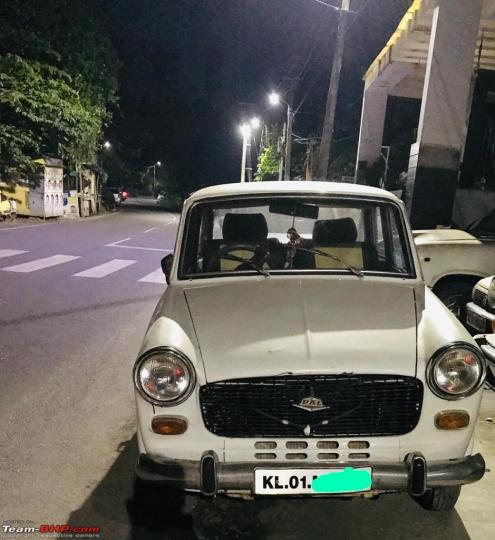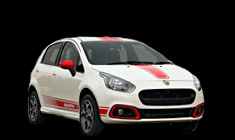News
Pics: 25 Fiat & Premier cars participated in Fiat Club Bangalore meet
Enthusiasts and their families drove over 100 km towards the Bangalore International Airport and beyond and all the classic cars performed perfectly.
BHPian arun1100 recently shared this with other enthusiasts.
FCB's December meet witnessed around 25 Fiat and Premier cars participate. It was a great day to meet Fiatians with their family and Fiats.
Here are the pics from the meet day.


















Check out arun1100's following posts for more pictures of the meet-up.
News
My experience of restoring a 1990 Premier Padmini Deluxe BE
As I pulled out of the owner's neighbourhood, all of a sudden the car started jerking and then perpetually stalling every 5 seconds.
BHPian BeemerBug_06 recently shared this with other enthusiasts.
I recently got hold of this 1990 Premier Padmini Deluxe BE for a friend of mine. Here is a little write-up about my experience of living with it so far.
I picked the car up on the 2nd of February from the owner's residence. My friend told me that it was a single-owner car and that the actual owner who is a Navy officer was busy overseas, so his neighbor would hand over the car to me. At first look, I was somewhat disappointed.
The car looked dull, neglected, and unkempt. It was parked under a tree with a thick blanket of dust covering it. The neighbor was an eccentric old man who was dancing around telling me that the car hasn't run in over two months and that he had doubts about whether it would start. A tad bit annoyed by then, I connected the battery and asked the old man to crank it. It sounded alright but didn't start. No fuel was coming to the carburetor. While the old man suggested I come back another day, I decided to use the age-old technique of risking myself and siphoning out some petrol through the main pipe. And with the next crank, she rose to life!
Since I often assist my mechanic when free, I've had my experiences of driving all sorts of problematic cars - cars with no brakes, stalling cars, overheating cars etc. and this experience was no different. In fact, it seemed to be a combination of all the problems and a test of my patience and skill.
As I pulled out of the neighborhood, the car began acting funny. All of a sudden it started jerking and then perpetually stalling every 5 seconds. It seemed as though only one brake cylinder at the front RHS wheel was working because it would violently pull to the right every time I braked. The carpets and matting were missing so that ensured the car turned into a sauna on wheels. However, I made sure to keep going and finally revved my way home. That was not exactly the best old car drive I have had!

Filling up at my neighborhood petrol pump on the delivery day because god knows how much fuel it had. The gauge wasn't working.
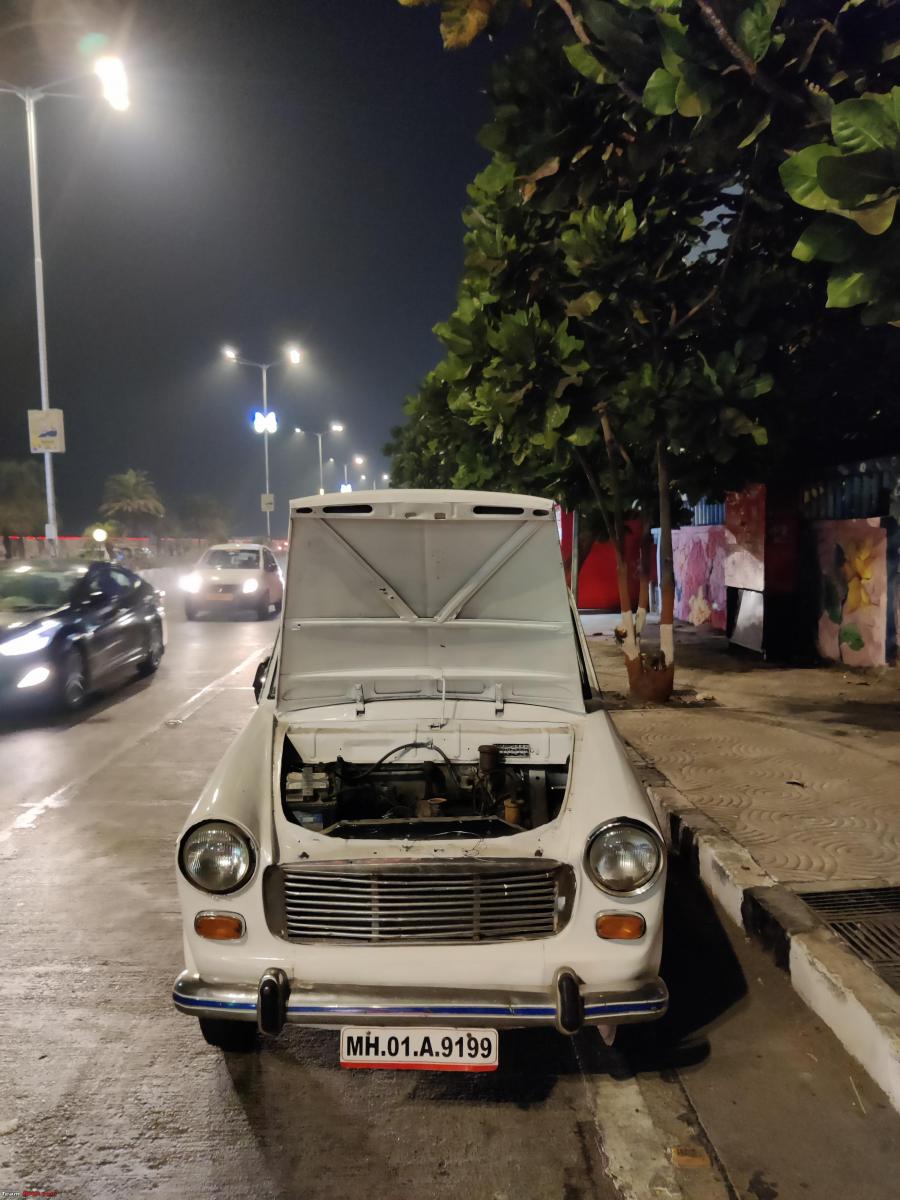
The disgusting grill
Besides the mechanical gremlins, the car had had a very poor quality overcoat done to it along with which NOT ONE of the electricals was working. Everything was just put in place, but nothing was connected. I drove it the first night without any lights!

My lord, I hated the cheaply painted black wheels and b pillars
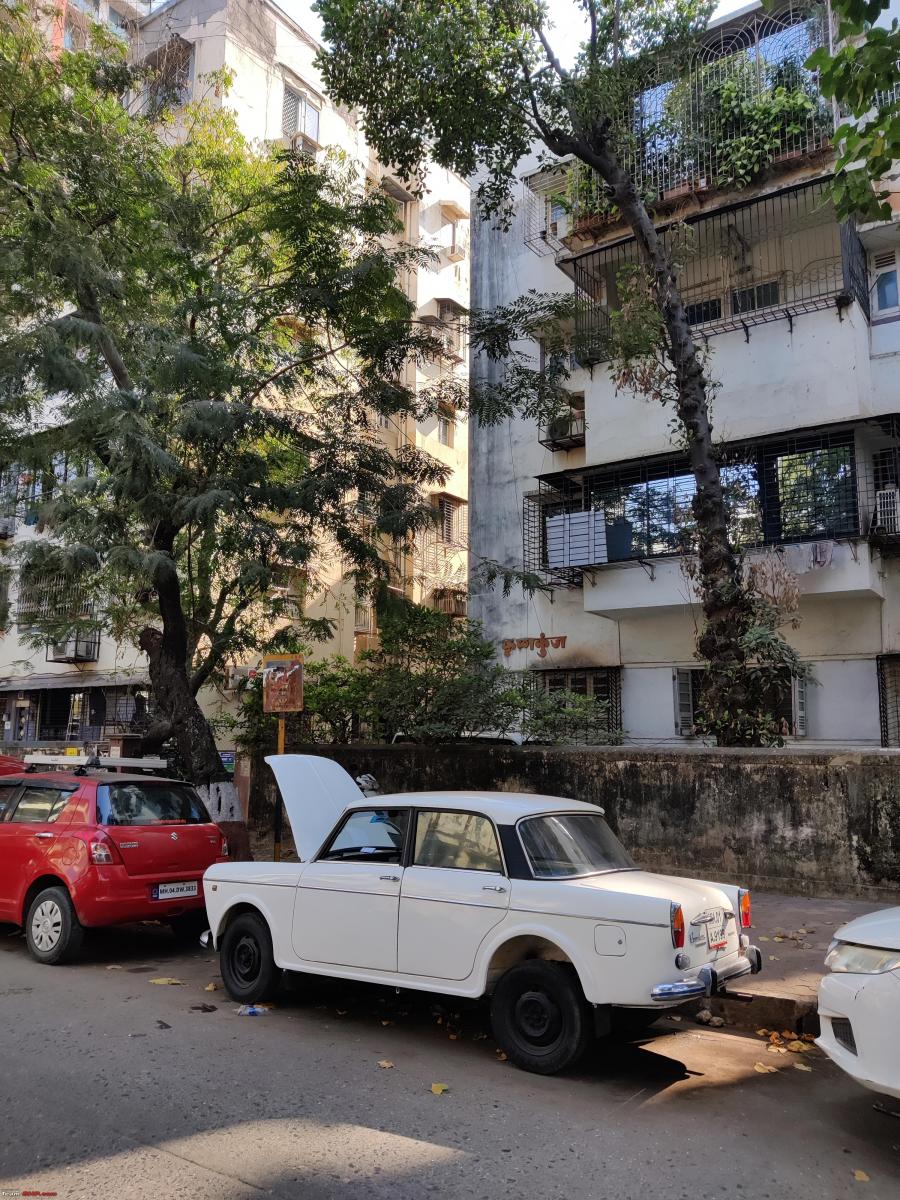
Sent off to the mechanic's the following day itself

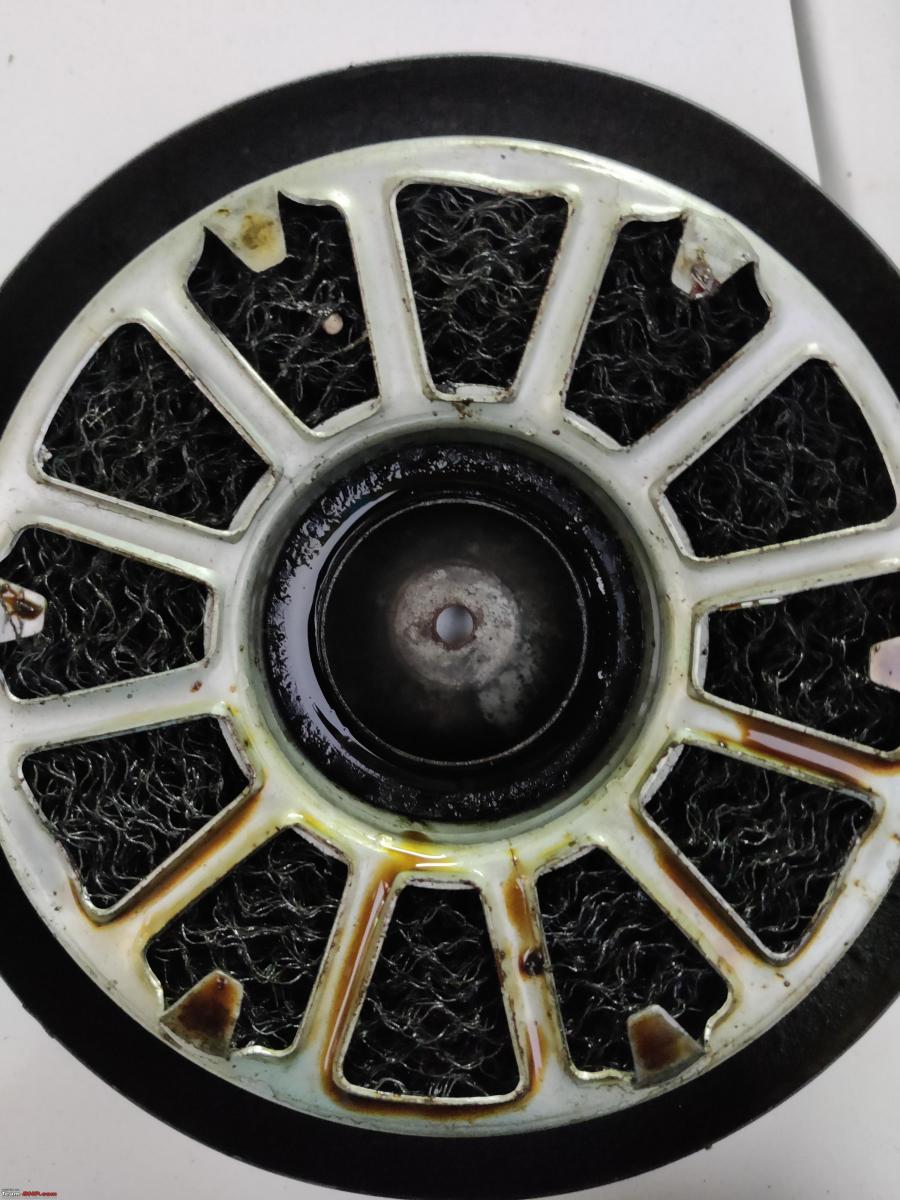
The oil-based air cleaner
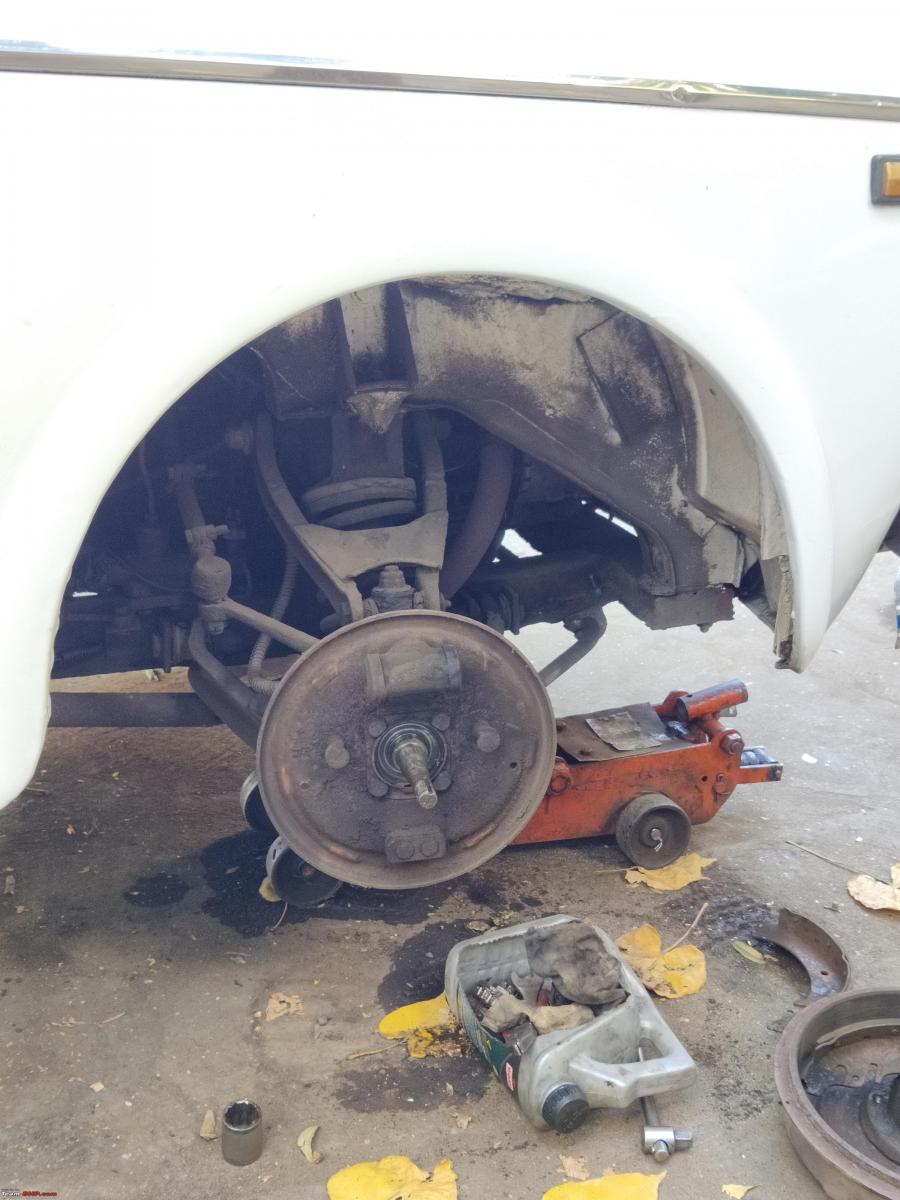
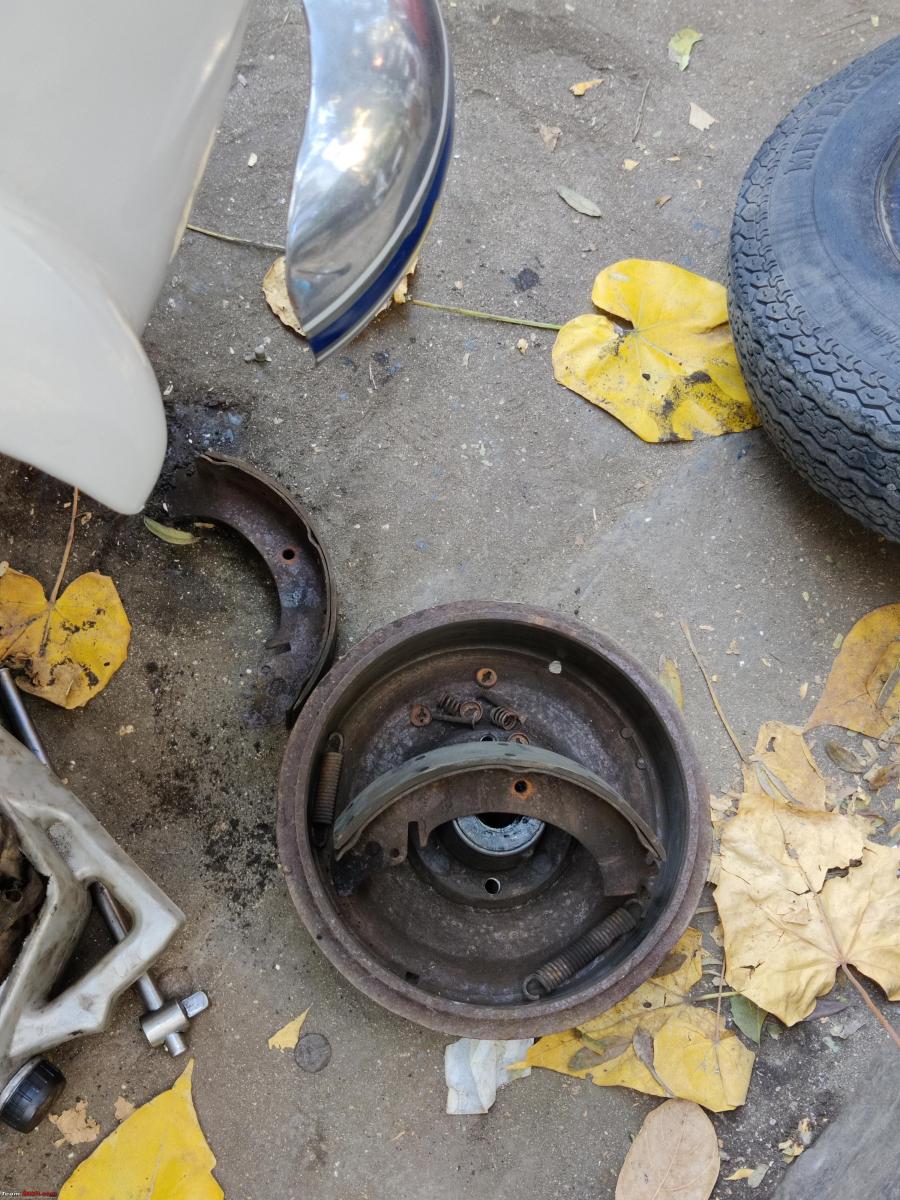
Servicing the brakes and installing new cylinders. Turned out that all were jammed and that the car was stopping only due to one cylinder


The oil was in pathetic shape, the tappets were all messed up and the car had a terrible misfire as Cylinder number 3 had no spark. The original Solex carburettor too was in a bad state and the slow jet was clogged. No wonder she was stalling again and again.
This was fixed later in the day as I luckily managed to source new plugs and plug wires for it in record time!
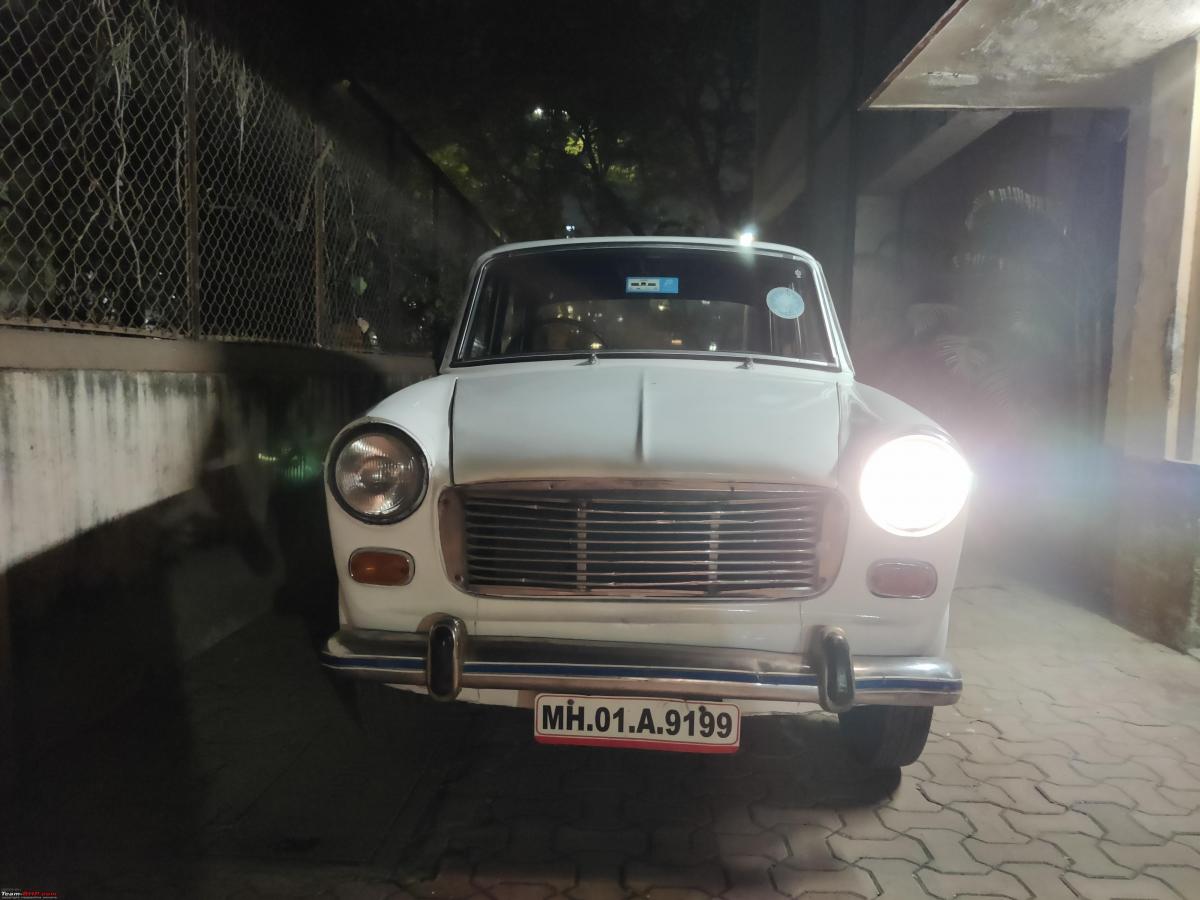
Finally managed to get one of the lights working


A quick night test run
Continue reading BeemerBug_06's restoration experience for BHPian comments, insights and more information.
- Tags:
- Indian
- Premier Padmini
- Restoration
News
Brought home a 50 year old Fiat President: Initial impressions
Thankfully, 90 percent of the trims and cosmetic parts are original.
BHPian vishy76 recently shared this with other enthusiasts.
Drove a 1990 Padmini belonging to a mutual friend and fell in love with it. However, the car I drove was quite battered up. Needed a grounds up restoration almost.
I was looking for something that was 70-80 percent there and just needed basic TLC in the form of running repairs and some cosmetic touchups.
Rejected numerous cars. Some slipped through. Finally found a diamond in the rough. I will keep the longer part of this story for my ownership report, but for now, here's my 1972 Fiat President. She's a single owner car.
Mechanical work done so far:
- Oil and oil filter change
- All fluids topped up including differential and gear oil
- Entire cooling system was flushed. Radiator had a crack on the neck. Welded. And the core was cleaned
- Spark plug and plug wires changed
- Carb tuning done and tappets set
- Exhaust system was changed excluding the manifold since it was all rusted
- Suspension greased and the car washed
- Fuel tank sender changed since it was always reading wrong. Left me stranded once thinking I had enough fuel
- All the electricals were brought back to working condition. Couple of light weren't functional before
- Got new wheelcaps (Original President ones cost an eye watering amount. I got Padmini ones for around 1/4th the cost)
Work pending:
- All four shocks are bust. Will change them with the bushes and spiders if I can get hold of good quality spiders
- Cross member needs to be changed
- Timing chain in the future sometime
Water pump and fuel pump can run as is. Will stock them up and change if needed. The tyres are 20 years old. They will also need to go next month.
Coming to aesthetic mods, I don't want to screw with the originality of the car. Having said that, I don't want to pay through my nose for minor cosmetic parts either. Would much rather invest that money in mechanicals and enjoy driving her. Thankfully, 90 percent of the trims and cosmetic parts are original. Still a few aesthetic changes I plan to make:
- Already removed the roof carrier and fender mounted radio antenna. Both looked ugly
- Get the bumpers rechromed since they were painted black
- Get clear lens indicators rather than the orange ones. They don't suit the car in my opinion
- Will be putting whitewall inserts shortly
Sharing a few pics clicked by my friend and trusted mechanic in Pune. He's done a fabulous job bringing her back to former glory.
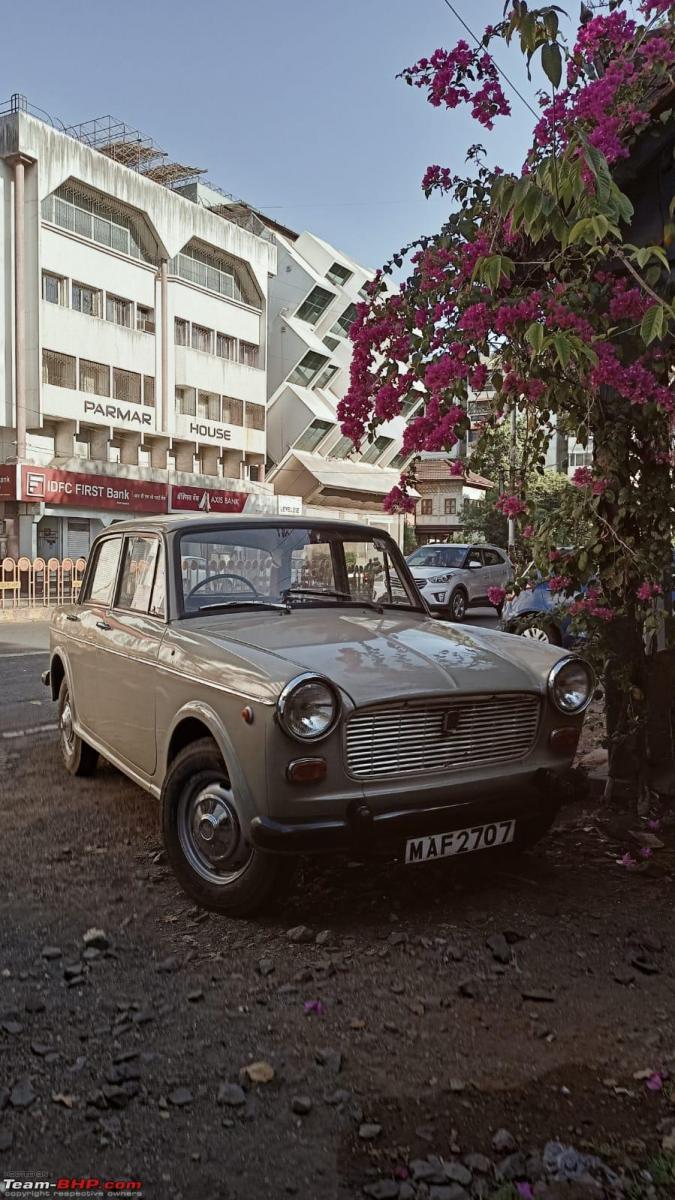
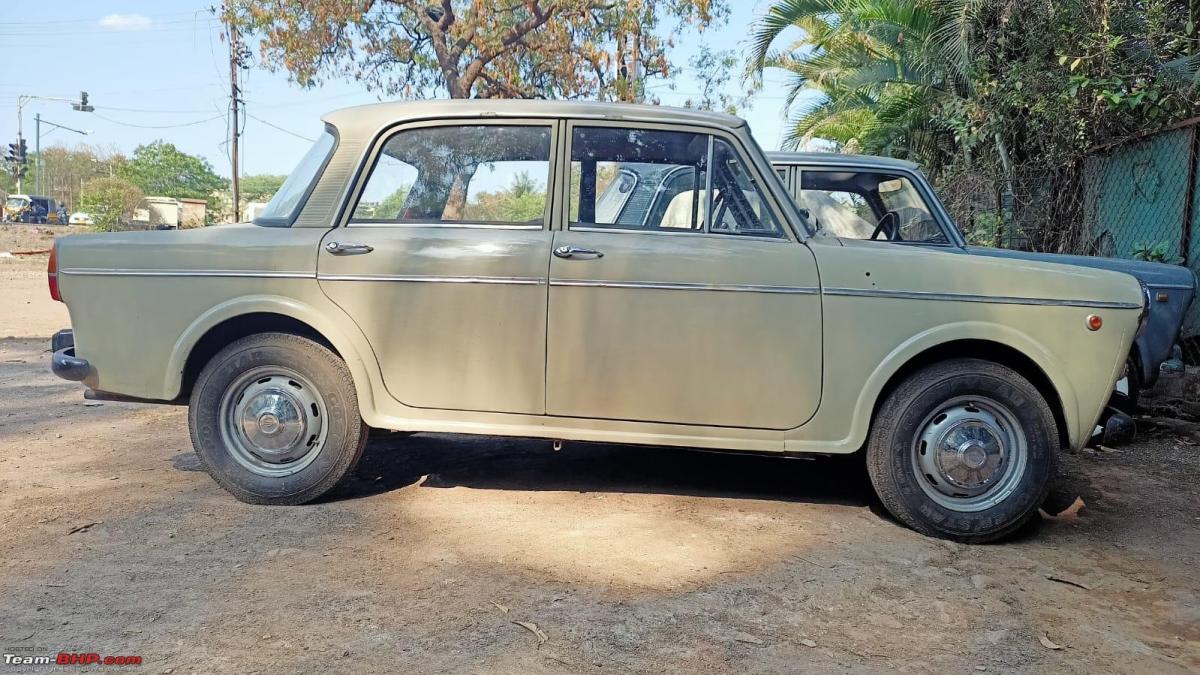
Read BHPian comments for more insights and information.
News
In pictures: Fiat 1100 Club Bangalore 13th anniversary meet
The gathering witnessed the participation of more than 40 classic cars that included models like the Fiat 1100, Premier Padmini and 118 NE.
BHPian arun1100 recently shared this with other enthusiasts.
FCB's 13th Anniversary meet was held yesterday in Lalbagh, Bangalore. Around 40 cars - FIAT 1100, Premier Padmini and 118 NE - participated in the meet. A couple of kids who were present did the cake cutting! A day well spent with like-minded Fiat enthusiasts and their families!
FIATs of the FCB!





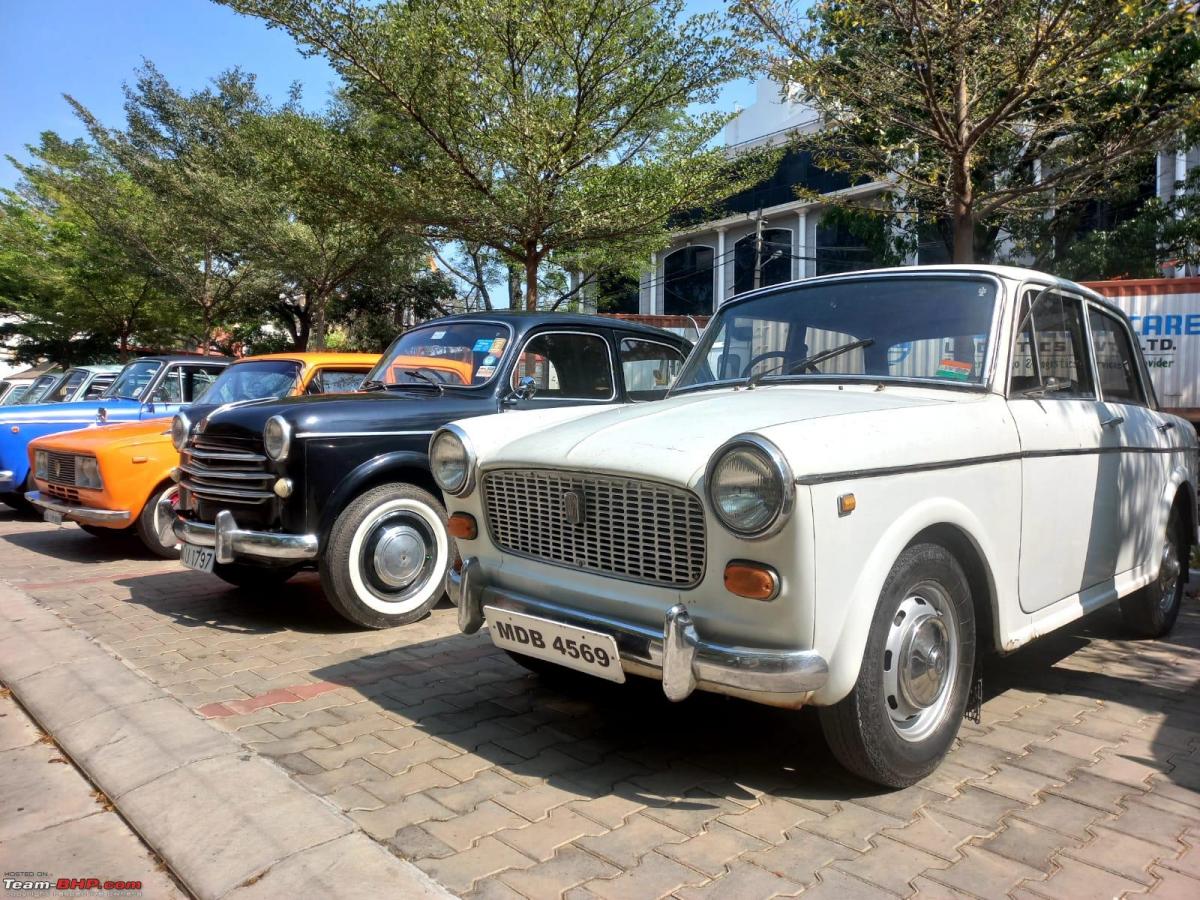





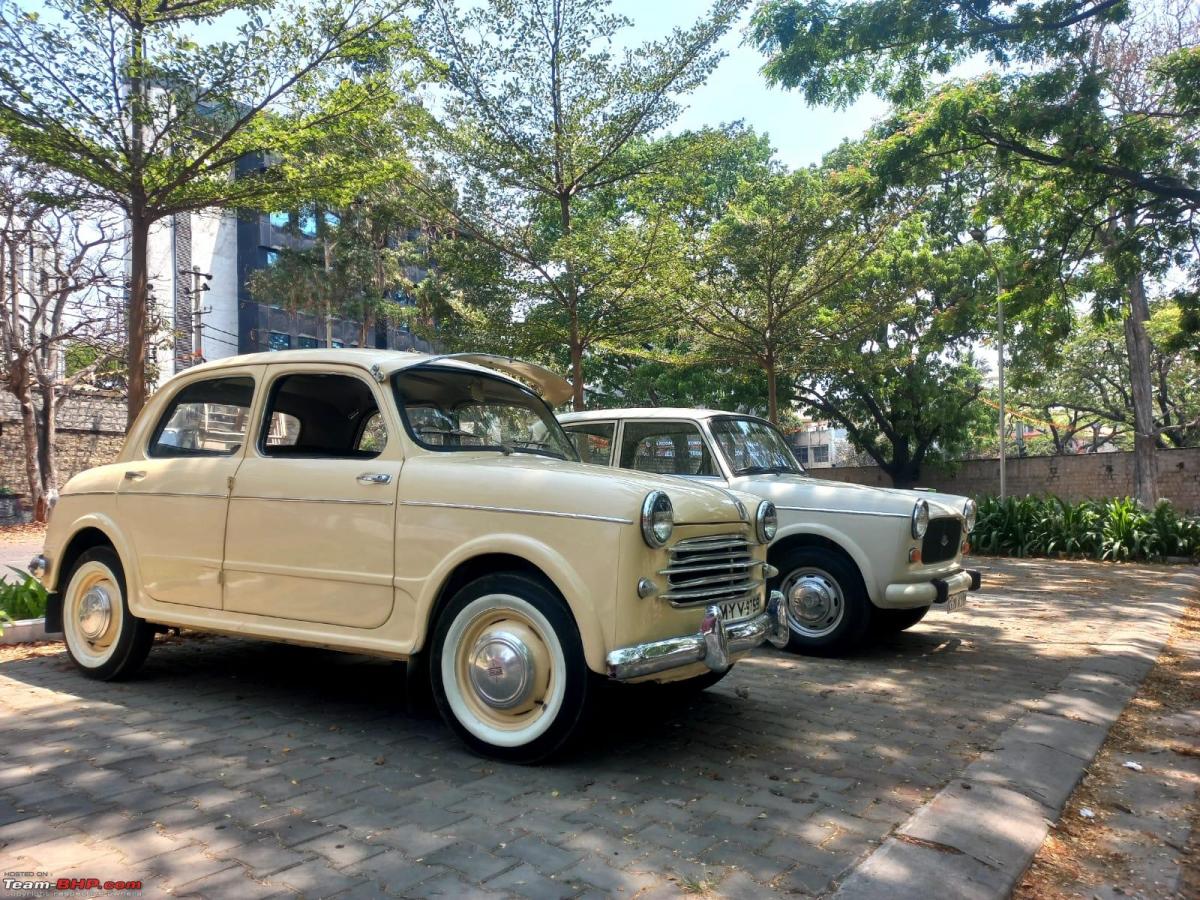

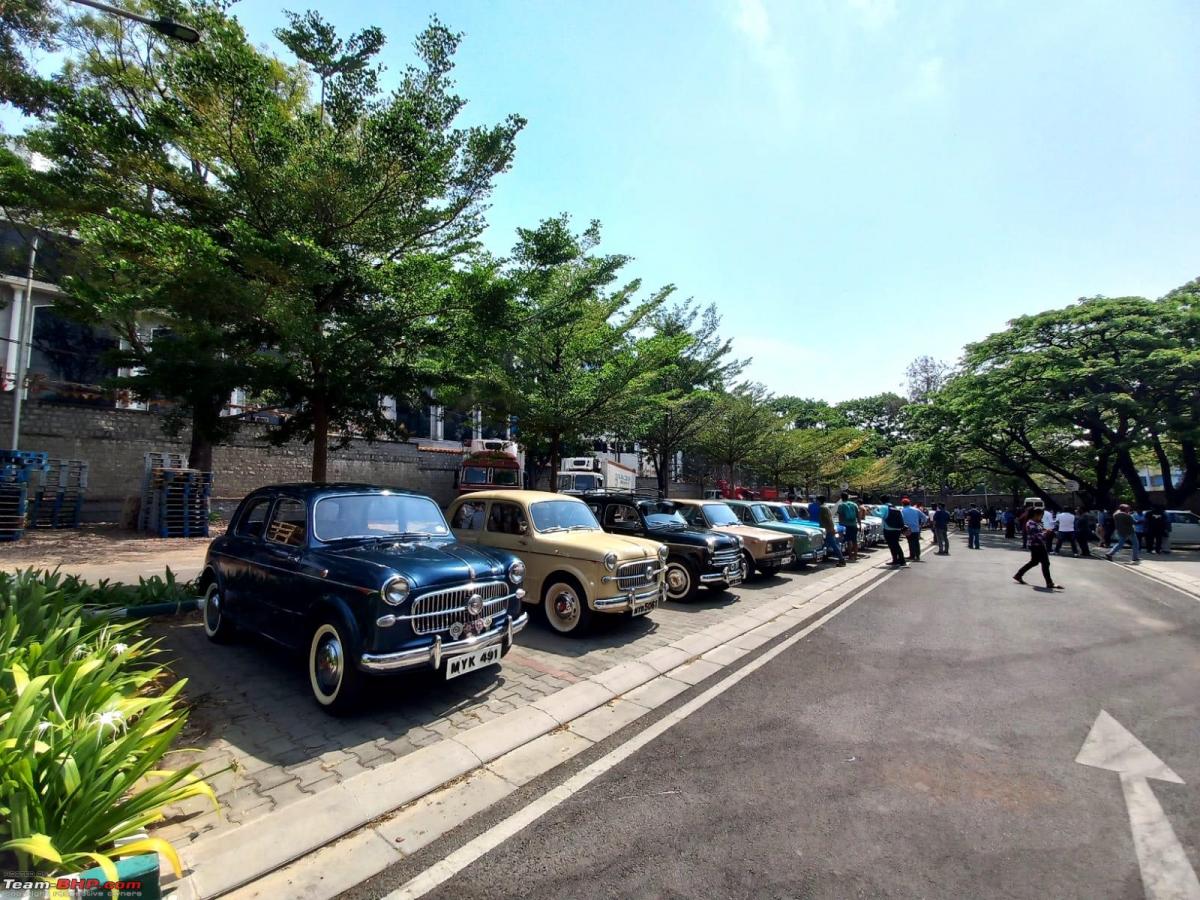




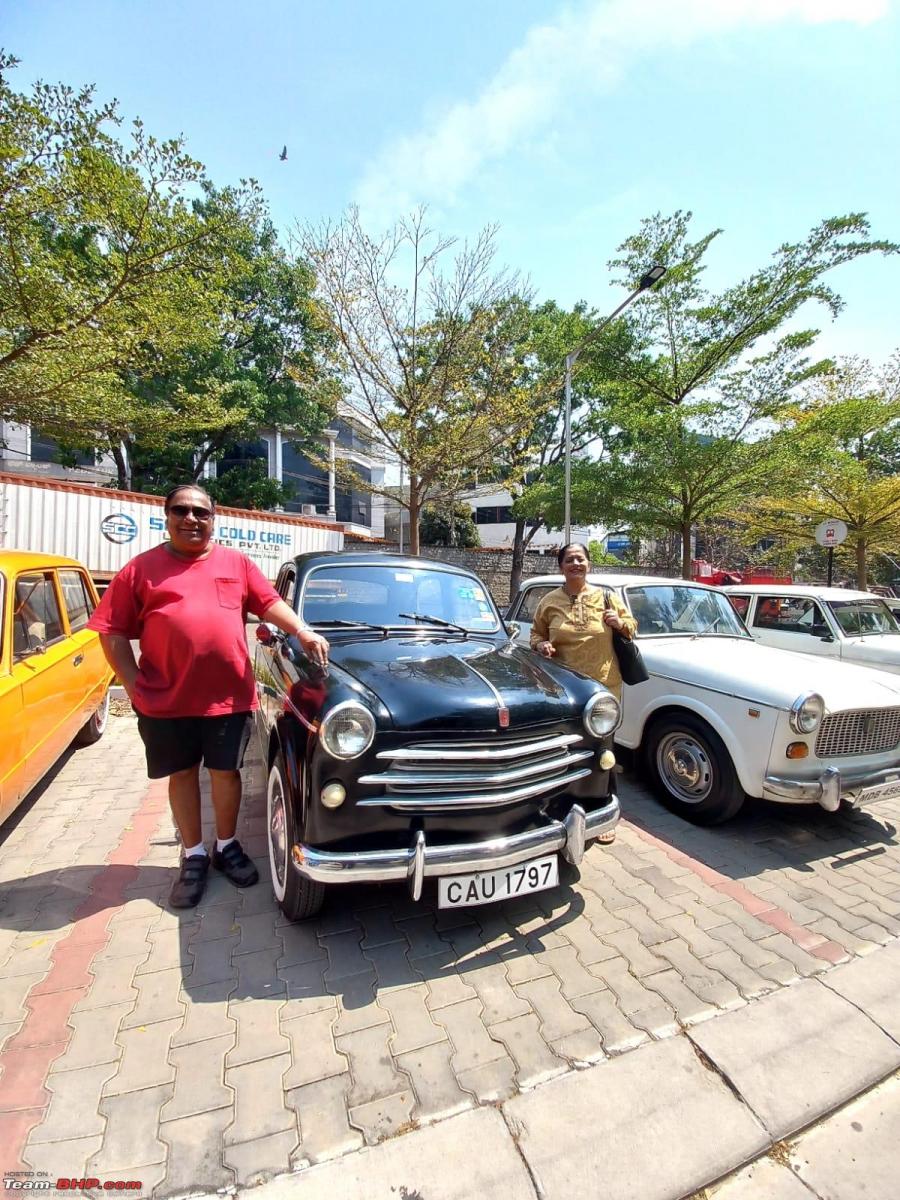


13 years of FCB!
Bhpian Autocrat's Padmini

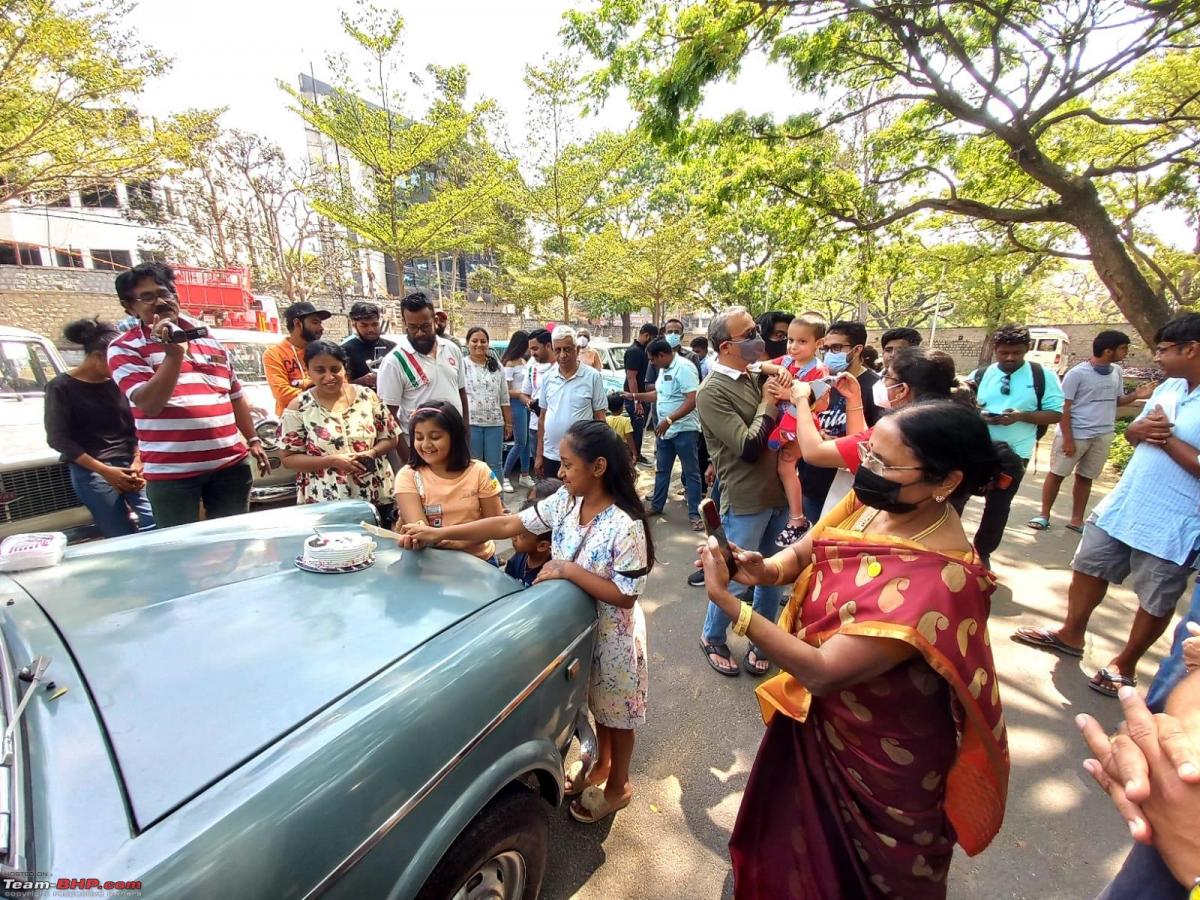


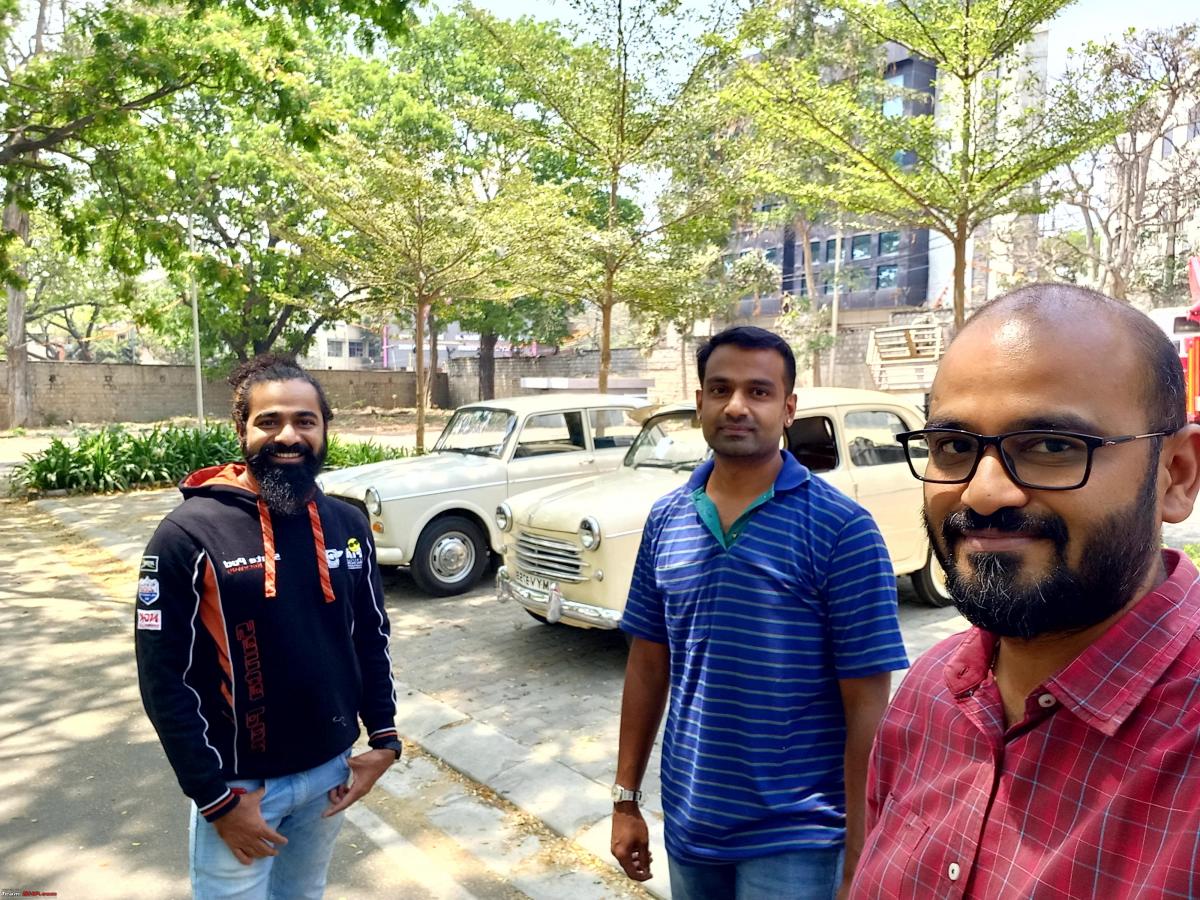

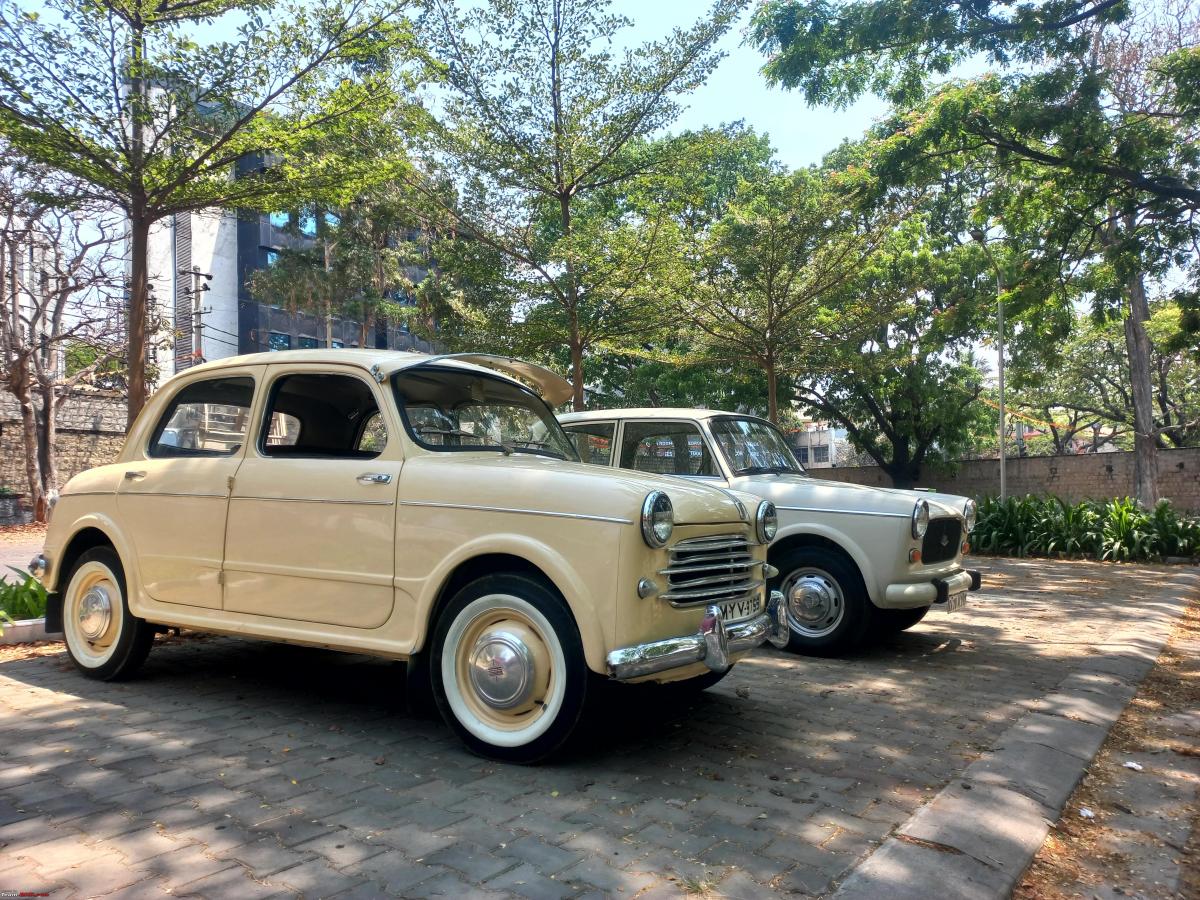
Closing pic of the FIAT lineup

Check out BHPian comments for more insights and information.
News
Our Experience Road tripping with the Ambassador in the 70s
My parents were passionate about touring by road and I have been traveling to different parts of India since 1966, in the Landmaster/Ambassador, until 1988.
BHPian Iksvaku recently shared this with other enthusiasts.
I used to live in the tea gardens of Assam. My parents were passionate about touring by road and I have been travelling to different parts of India since 1966, in the Landmaster/Ambassador (different models, across the decades), until 1988. I have continued to do so, in more modern cars.
There is no doubt that modern cars have made life much easier. Once-a-year maintenance, minimal regular checks, higher-output and more efficient engines, much better brakes, the hop-in-and-go ability for long drives etc.
My comments below are in response to observations of other forum members and are based on highway and cross-country travel (all over India, Nepal and Bhutan) in the Ambassador.
- Our optimum (fuel consumption versus travel time) long-distance driving speed was 70kmph. The average speed would be 50kmph. We would drive from 06:00 hours to 15:00 hours (or less). We never had the problem with overheating.
- When we were posted in Darjeeling, we used to drive the Ambassador up an extremely steep incline (3rd gear + 4-wheel drive in our 1956 Land Rover), even with full load when we were returning from one of our tours. The only problem was holding the car on that incline, when faced with opposing traffic.
- Yes, we did carry a full set of tools, hoses, belts, fuses, spare oils, distilled water, a 20 litre jerrycan of fuel, towing rope, an extra spare tyre etc. I do not remember using anything other than spare tyres, on two punctures in 22 years!
- Since we changed to new models every three years, I do not remember rust being an issue.
- Servicing on a monthly basis was the norm, so it was not an inconvenience. Living in remote areas, our cars used to typically run 30,000 km per annum, being sold after they crossed 1,00,000 km.
- Yes, there were no safety measures, yet we never had any accident injuries due to the solid build.
- A single IRVM was the norm, so we never missed ORVMs.
- Smoke from the exhaust was not an issue if the car was maintained, except on cold starting.
- Fuel consumption was extremely variable, from car to car, due to the fact that every Ambassador car was unique. There really was no concept of uniform quality. The standard was 12kmpl. One car, which we had in the 1980s used to give us 17kmpl! Please note that our use was 100% open road driving.
- The bench seats were also of variable quality, from car to car, ranging from extremely soft to extremely hard. Yet, we were used to spending up to 9 hours a day in it without getting off as cripples!
- Starting was never an issue. Even when we were in Darjeeling, where the Land Rover was the regular car, it was my job to run the Ambassador engine every morning for 15 minutes. The process was to use the starting handle for 20 turns (I used to treat it as a part of my exercise regimen :-), then pump the accelerator and start the car.
- Only the first gear was not synchronised. We did not need to double clutch, though it was fun to do so!
- Swallowing petrol while clearing fuel line blocks is something I really do not miss!
- Manual steering was a workout only at low speeds. Since were in an open road environment, steering effort was not an issue.
- We never had a problem with reliability on our long drives. Small issues, such as fuel line blocks and distributor cleaning were all on local drives.
- Standard checks for oil, water and tyre pressure was done daily. Most of the maintenance would be done at home, weekly. After converting to modern cars, it took me a long time to stop opening the bonnet every day or checking tyre pressure weekly (once nitrogen was introduced).
- Painting the upper half of the headlamps black was only done at wartime.
- In the 1980s, we were posted in the hills and the virtually non-functional hand-brake of the Ambassador demanded the development of right-foot skill in lighting quick shifts from brake to accelerator.
- Changing tyres was a challenge! My mother used to time me and my record was 7 minutes.
- Central locking was not an issue as we never locked our car unless we went out of the state on a road trip. The moment we crossed our home state border “lock the car” became my father’s constant refrain at every stop.
- The high-beam/low-beam switch on the floor beside the clutch was actually quite convenient. In-between, the switch became a pull-push one on the centre panel (can we really call it a dashboard?) which was quite tricky to operate in high-speed (80kmph, in those days) night driving on the highway.
- Child locks existed! As far as I remember, all our cars had child locks on the rear doors.
- The requirement for a full-car check-up before a long tour is definitely not missed. Please note that (local) regular airport trips for us was of 220kms.
- Load capacity was at a different level. I have crammed up to 12 friends into it on a short trip within Kolkata. In one of our postings, Ambassador taxis used to run with both the left doors and the boot open. Five people in the front, six in the back, three people out of each left door and four people in the boot.
Checkout BHPian comments for more insights and information.
News
What old car problem are you glad we don't have anymore
Rust was a major, major problem with cars like the Ambassador, Contessa, 118NE, etc.
GTO recently shared this with other enthusiasts.
For those of us who've driven in the 90s (and before), today's cars are relatively fuss-free to drive & own! But things weren't so simple a couple of decades ago.
The old car problems I don't miss at all:
- My Padmini, Ambassador, 118NE & Jeep overheating when climbing the Lonavla & Mahabaleshwar ghats. Today, even a little Santro will do 10 climbs without breaking into a sweat.
- Stocking up on hose pipes & belts because the quality of those in my 118NE was so poor, they'd always break. Ditto for the Jeep.
- Rust was a major, major problem with the Ambassadors, Contessas, 118NEs etc. Doing body work every 3 years was usual stuff for us as we live right next to the beach.
- Servicing every 3 months / 5000 km was a royal pain. Today, 1-year services with 10000 - 15000 km are standard-fare.
- Short 6 - 12 month warranties. Extended warranties of 7 years were a dream then.
- No safety. No crash testing. No airbags. No ESP.
- While budget hatchbacks have 90 BHP today, we used to roam around in ~40 BHP cars which were simply underpowered. It was a common practice to switch off the a/c when going up an incline.
- I don't miss those dangerous two-lane highways at all. There were no dividers and to overtake, you had to go over on the opposite side. Heck, I remember so many 1-lane roads then. If even a tempo came from the opposite side, you had to throw half your car off the road.
- Today, the service advisor is expected to go out of the way for you, treat you well, you will fill up forms to rate their service and so on. Back in the day, it was you who had to schmooze the service advisor for "good service", treating your car well and getting stuff approved in warranty. We used to send Diwali gifts to them
Here's what BHPian porsche_guy had to say about the matter:
Mirrors!
Although this might not constitute as a really old car problem but having 3 mirrors on/in the car was something quite rare and often restricted to the top variants of cars. It is truly astonishing how such simple things were given a toss those days.
I cannot be more thankful that we are getting passenger side mirrors as standard these days. Absolutely cannot imagine driving without them these days.
Here's what BHPian achyutaghosh had to say about the matter:
Manually sucking fuel for the old 1969 Fiat 1100 carburettor when the pump would not work. I have consumed petrol and burped petrol fumes so many times.
Not sure how many in the forum have done this, but thank God we do not have to face this situation now!
Here's what BHPian kurmist had to say about the matter:
- "Dhakka starts" (push starts) for when the battery was low. Lots of people pushing the car, each one shouting "uthao, uthao" (for releasing the clutch) and then all cheering when the car finally started.
- Repairs costing a few hundred rupees rather than lakhs.
- Simplicity of cars. I remember repairing my dad's Fiat Padmini literally overnight after bashing in the side (dad never found out till much later when I confessed, lol).
Here's what BHPian Guna had to say about the matter:
- I am happy that we don't have to paint the upper half of the headlamp black.
- No bench seat for the driver/co-passenger, which means no kids sitting in-between and cramping you to operate the gear lever.
- No need to give hand signals.
- I don't have to hand over the keys to the guys at the petrol bunk to open the fuel lid cap.
Here's what BHPian @og_adi had to say about the matter:
I have always been a great admirer of some of the old cars which carry timeless design elements. Sure, all these cars come with great setbacks but somehow everything dies down with just a look at them. If however there are some things to complain about, this would be my list-
- Smoke from the exhaust- Most classy cars have a habit of drinking a lot of fuel and leaving behind a lot of smoke.
- Poor suspension setups- I'm pretty sure automakers weren't familiar with the concept of bending metal in a helical way so as to make it compressible then. I've been in the Ambassador and Padmini quite a few times in my life (Was brought back home for the first time when I was born in an Amby) and though the experiences were memorable, rides were painful. Trust me, spend a few hours in these cars over bad stretches of roads and you either fix your backache or suffer from it for the next few weeks.
- Poor drivers' cars- This point doesn't apply to some but dad tells me how the cars pulled towards different directions even on a plain, straight road. Apart from that, though the manual steering sounds fun to hear, they sure were a pain to handle.
- Even though they have many drawbacks, I find them beautiful as I age. Maybe it's their charm that one can only understand once they're gone.
Check out BHPian comments for more insights and information.
News
Padminis, Ambassadors and the Indian vehicle scrappage policy
We find our childhoods and good old sweet memories in them than the ever so prestigious 1929 Phantom - II, which is a true classic. We grew up watching our fathers and brothers driving and maintaining them and I am very sure that many of us here already own a couple of them. I am one of those people who finds joy in searching for parts that are not in production anymore, procuring them and installing them in the said cars.
Retrogrease recently shared this with other BHPians.
I never thought that my first post on Team-BHP will be filled with anxiety and a slight panic.
There is a line between the vintages that run our streets and the yesteryear cars, namely the Hindustan Motors Ambassadors and the Premier Padmini sedans which are the most commonly owned by us Indians. We find our childhoods and good old sweet memories in them than the ever so prestigious 1929 Phantom - II, which is a true classic. We grew up watching our fathers and brothers driving and maintaining them and I am very sure that many of us here already own a couple of them. I am one of those people who finds joy in searching for parts that are not in production anymore, procuring them and installing them in the said cars.
Now there has come a time, I look at them with uncertainty and anxiety about their future. None of them fall into the elite vintage category. One being a 1986 model and the other a mere 1998 model. I am afraid that they might be taken away from me to meet their eternal death at a scrapyard where they join broken sinks and rusty barrels. Their non metallic parts ending up in a landfill and the ones that can be salvaged become a part of a brand new Skoda.
The reason for my anxiety is panic selling of the owners who held on to these cars as part of family. Now that the scrappage policy plan is on top gear, they view these old cars like tumors and are eager to get rid of them. Well, I don't want to get rid of my years long devotion and attention that I have put into my cars and I'd want to continue doing so.
The media reports says that there has been no definite categories as of such and all cars above 15 years are likely to be scrapped and no mention of the once most commonly used brands. Since there are no hard facts at the moment to be worried of, it certainly has started brewing a small fire within me. I have attached their pictures of the cars I proudly own.
Thanks to Retrogrease once again! Check out BHPian comments for more insights & information.
News
Fiat Premier Padmini Taxis begin going off Mumbai roads
Black and yellow garbed Premier Padmini taxis have been an indelible part of the Mumbai urban scape for nearly 5 decades. These cars, built by Premier Automobiles Limited, under license from Fiat, at the Kurla factory in Mumbai have been ferrying commuters in the economic capital of the country even in the face of modern competition. A recent rule made by the Maharashtra government, ousting all taxis older than 20 years off Mumbai roads has meant that black and yellow Fiat cabs will begin rolling off city streets.
The permits for taxi-cabs older than 20 years old will not be renewed in Mumbai, in what seems to be a move aimed at reducing air pollution levels in the city. Older vehicles, especially those used for commercial purposes as goods and people movers, are known to emit higher levels of tail pipe emissions than new vehicles. Many Indian cities have been actively legislating for the non-issuance of yearly permits to older commercial vehicles in order to reduce air pollution levels.
The Premier Padmini, initially known as the Fiat 1100 D, was based on the Fiat 1200 GrandLuce Berlina. The car began production at Premier's Kurla factory in 1964. The last Premier Padmini rolled off the assembly line in the year 2000. This means that the Premier Padmini has been around on Mumbai roads for a full 49 years since the commencement of production. At its peak, nearly 62,000 Premier Padmini taxis plied on Mumbai's, then known as Bombay, roads.
Now though, the advent of newer cars such as the Maruti Omni, WagonR and the Alto has meant that the Premier Padmini taxis have been slowly relegated to scrap yards and collector lists. Currently, there are about 9,500 Premier Padmini taxis operating in Mumbai, a number that is expected to fall to 4,500 by the end of the year as the older taxis go off the road. Next year, more Premier Padmini taxis will begin going off the road and over the next few years, the last of these iconic symbols of Mumbai will cease to operate.
According to report carried by the LiveMint, a similar fate awaits the Hindustan Ambassador in Kolkata as the government of the day in the state of West Bengal has decided to allow other car makers to ply their wares in the meter taxi market. While Tata Motors's Indigo and Maruti Suzuki's WagonR car models have already been allowed to operate as meter-taxis in Kolkata, the government's latest move to open up this market is expected to see more involvement from car makers seeking to make inroads into the meter-taxi segment of one of India's oldest metropolitan cities.














